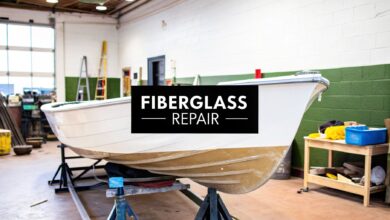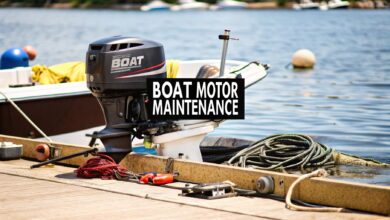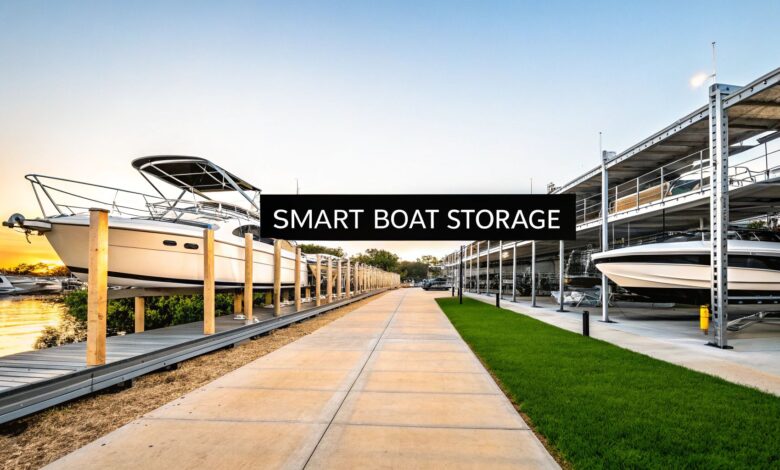
Owning a boat offers unparalleled freedom, but proper storage is crucial. Choosing the right method extends your vessel’s lifespan and reduces maintenance costs. It ensures your boat is ready for your next adventure.
This guide explores professional boat storage ideas, focusing on long-term vessel preservation. We will detail various off-water and in-water solutions. You'll understand everything from dry stack facilities to traditional mooring systems.
By examining these options, you can select the best fit for your boat, climate, and budget. We provide actionable insights to help you make an informed decision. This list breaks down the most effective storage methods for modern boat owners.
1. Dry Stack Marina Storage
Dry stack marina storage, or a "boatel," is a highly secure method for keeping your vessel out of the water. Your boat is stored indoors on a multi-level rack system. When you want to go out, a specialized forklift retrieves your boat and places it in the water.
This solution is popular for small to mid-sized powerboats, typically up to 40 feet. It protects from sun damage and eliminates the need for bottom painting. Facilities like the Safe Harbor Marina network offer a valet-like service that streamlines the boating experience.
Key Insight: Dry stack storage combines on-demand launching with superior indoor protection. This significantly reduces maintenance and preserves your boat's value.
Why Choose Dry Stack Storage?
The primary advantage is unparalleled protection and convenience. Keeping your boat enclosed shields it from UV rays, salt spray, and harsh weather. This method also enhances security with 24/7 monitoring and controlled access.
The infographic below highlights key features of dry stack facilities.
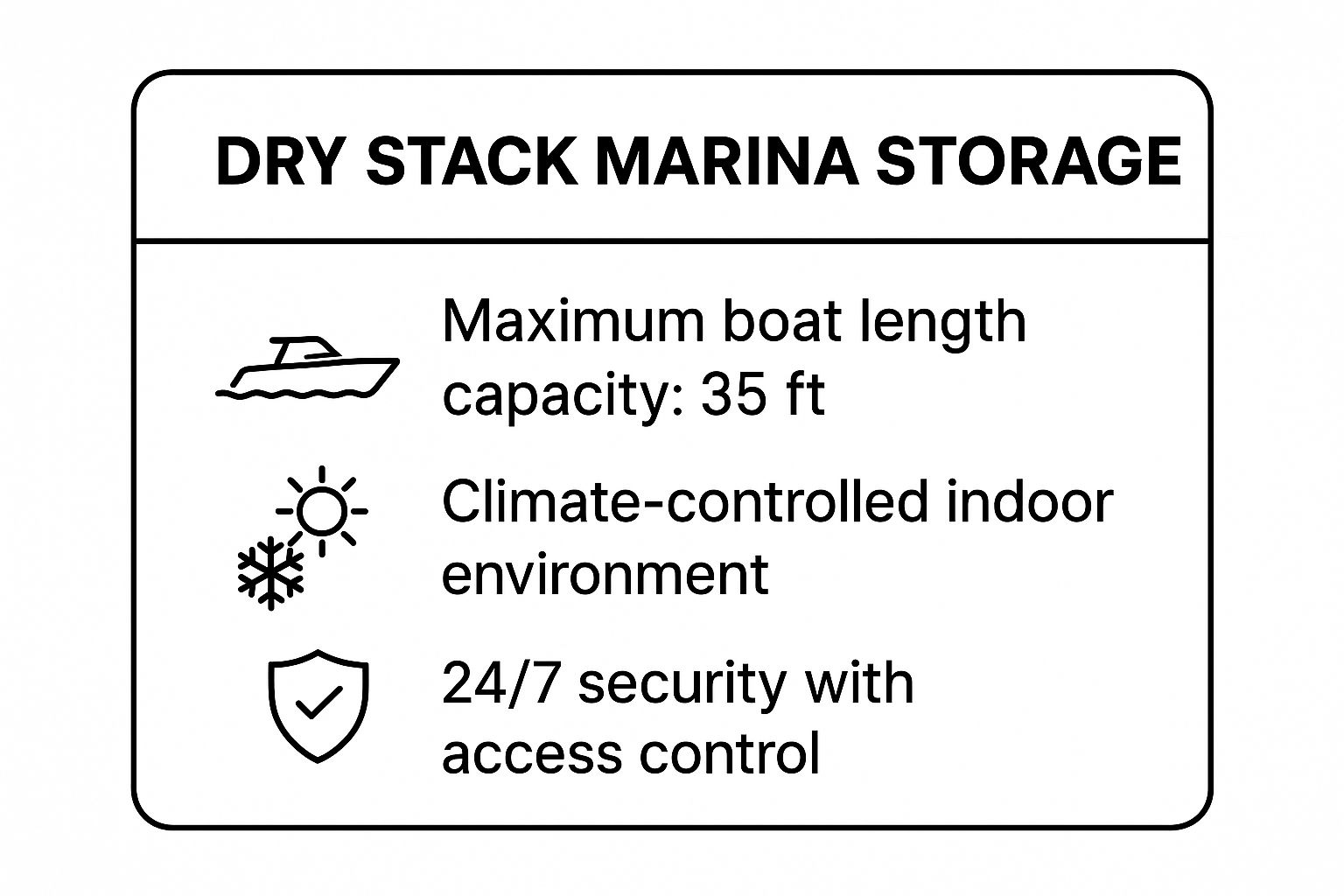
These facilities are tailored for specific vessel sizes. They offer a secure, climate-controlled environment that minimizes maintenance costs. This combination of security and preservation is why many boaters choose this option.
Practical Tips for Using Dry Stack Marinas
To make the most of this boat storage idea, consider a few practical steps:
- Book in the Off-Season: Marinas often offer better rates during fall or winter. Ask about early-bird specials for the upcoming season.
- Confirm Specifications: Verify your boat’s length, beam, and weight are within the facility's forklift capacity before signing a contract.
- Check Insurance Requirements: Many marinas require specific liability coverage. Share their requirements with your insurance agent to ensure you are compliant.
- Plan Your Launches: Understand the facility’s policy for launch requests. Some require a few hours' notice, especially on busy weekends.
2. Boat Lift Systems
A boat lift system hoists your vessel completely out of the water while it remains at your dock. These lifts use electric or hydraulic power to keep the hull suspended safely above the waterline. This eliminates the need for trailering or commuting to an off-site facility.
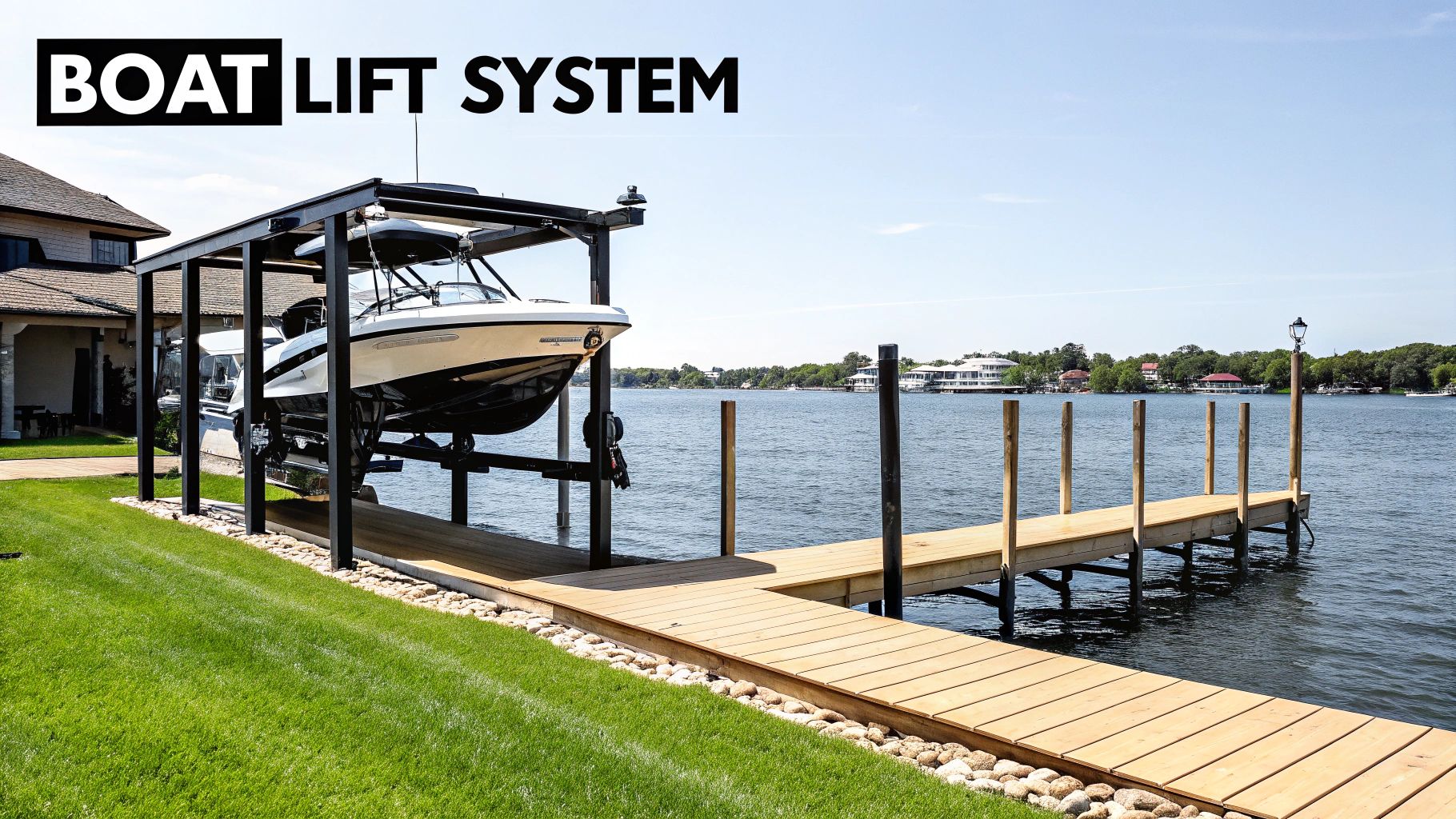
This method is popular in diverse environments, from freshwater lakes with companies like ShoreStation to coastal canals. By keeping the hull dry, you prevent algae growth, blistering, and corrosion. Immediate access combines perfectly with superior protection.
Key Insight: Boat lifts blend immediate water access with out-of-water protection. They are an ideal investment for maximizing time on the water while minimizing hull maintenance.
Why Choose a Boat Lift?
The main advantage is preventing marine growth and hull damage without sacrificing convenience. A boat on a lift is ready to launch in minutes with the flip of a switch. This also protects your boat from wake damage and fluctuating water levels.
The video below shows how a modern boat lift operates.
Lifts also provide enhanced security against theft. An elevated vessel is a much harder target for thieves. For waterfront homeowners, a boat lift is one of the most practical boat storage ideas available.
Practical Tips for Using Boat Lifts
To ensure your boat lift operates safely, follow these best practices:
- Size It Correctly: Choose a lift with a weight capacity at least 1.5 times the fully-loaded weight of your boat. This ensures a safe margin.
- Prioritize Safety Features: Ensure your lift's electrical system includes a Ground Fault Circuit Interrupter (GFCI) to prevent electrical shock.
- Perform Regular Inspections: Routinely check all cables, pulleys, and structural components for signs of wear, fraying, or corrosion.
- Winterize in Cold Climates: Follow the manufacturer's instructions for winterizing the lift to prevent damage in freezing temperatures.
3. Trailer Storage Solutions
For many boat owners with vessels under 26 feet, keeping the boat on its trailer is practical and cost-effective. This approach offers flexibility, allowing you to store your boat at home or in a dedicated facility. It gives you the freedom to tow and launch from any accessible ramp.
Proper trailer storage is a fantastic boat storage idea that protects your investment. Facilities like Public Storage offer secure, and sometimes covered, spaces. The key is combining a good location with diligent maintenance.
Key Insight: Trailer storage provides the ultimate flexibility and control. It allows you to manage your boat’s security and maintenance on your own terms, often at a lower cost.
Why Choose Trailer Storage?
The primary benefits are cost savings and autonomy. You avoid recurring slip fees and the scheduling constraints of marinas. Storing on a trailer also provides convenient access for maintenance and cleaning.
Keeping your boat out of the water prevents hull blistering and marine growth. This reduces the need for expensive bottom paint and cleaning. You can learn more with these tips for trailering a boat.
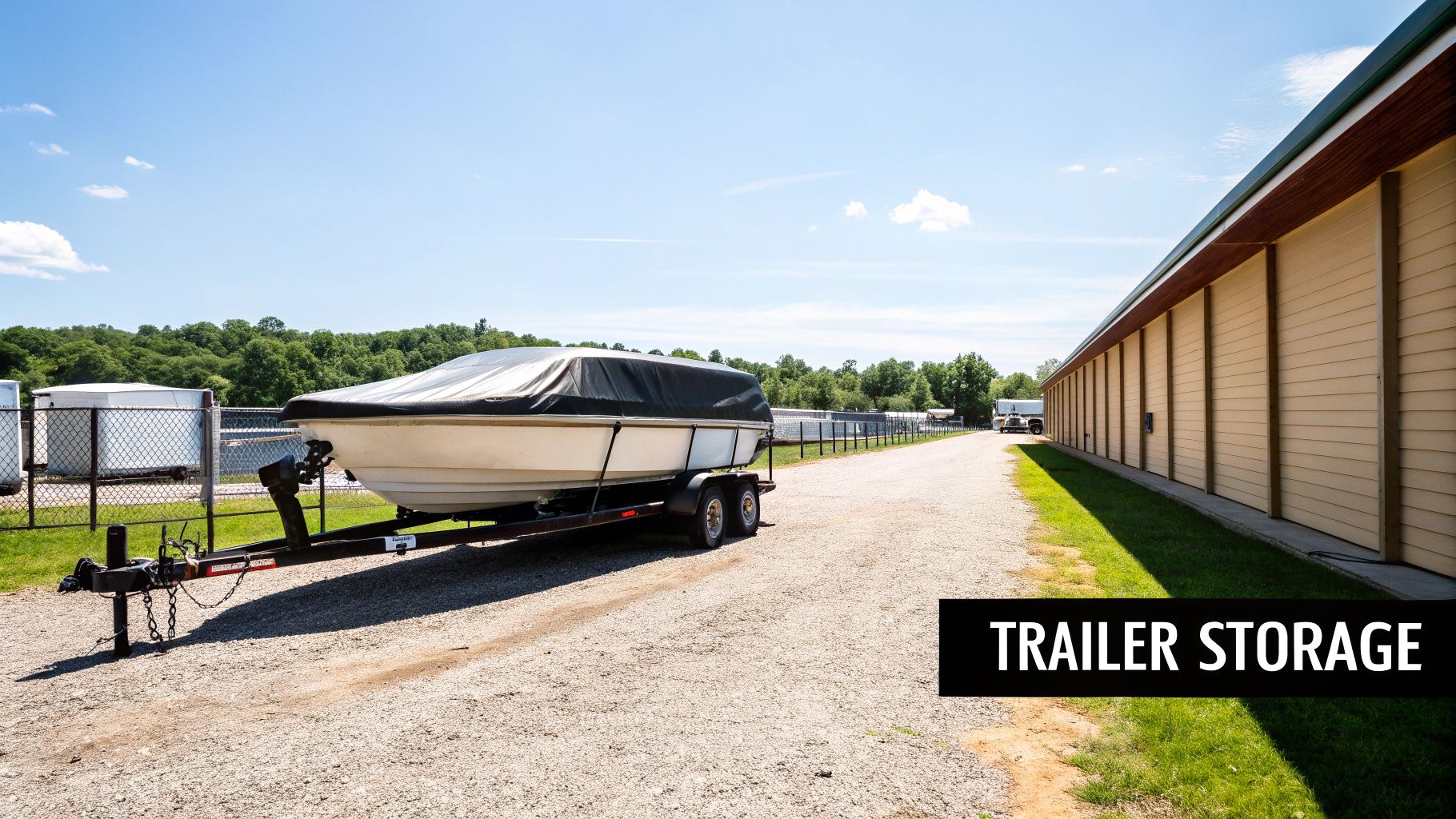
As shown, a high-quality cover is essential for protection from UV rays, rain, and debris. Proper trailer support and placement are also crucial for safety.
Practical Tips for Using Trailer Storage
To maximize the benefits of this storage idea, follow these essential tips:
- Ensure Proper Support: Store the trailer on a level surface. Use jack stands to take the weight off the tires and suspension.
- Protect Your Tires: Inflate tires to the maximum recommended pressure. Use tire covers to shield them from UV degradation.
- Prepare the Boat: Always use a high-quality, breathable boat cover. Remove the drain plug to ensure all water drains completely.
- Enhance Security: Invest in a high-quality tongue lock and consider a wheel lock. For added peace of mind, use a GPS tracking device.
4. Indoor Warehouse Storage
Indoor warehouse storage offers one of the highest levels of protection, especially during the off-season. This boat storage idea involves storing your boat on its trailer inside a large, enclosed building. This shields it completely from sun, rain, and wind.
This solution is ideal for owners who prefer a hands-on approach to upkeep. It provides a secure, private space where your boat remains safe. Facilities range from dedicated boat warehouses to general storage units with large bays.
Key Insight: Indoor warehouse storage provides a secure, self-service environment. It combines complete elemental protection with convenient ground-level access for maintenance.
Why Choose Indoor Warehouse Storage?
The primary benefit is maximum protection paired with owner access. Storing inside a warehouse eliminates UV degradation, moisture damage, and pests. This method cuts down on annual maintenance like waxing and cleaning.
These facilities also offer enhanced security over outdoor lots. Most have gated access, security cameras, and good lighting. You can find a good overview of boat storage options on boating-articles.com.
Practical Tips for Using Warehouse Storage
To get the most out of this boat storage idea, plan ahead with these tips:
- Verify Dimensions: Before committing, measure your boat’s total height on the trailer. Ensure the facility’s door and ceiling heights can accommodate it.
- Inquire About Power: Ask if the facility offers electrical outlet access. This is crucial for connecting a trickle charger to maintain your battery.
- Check On-Site Amenities: Look for facilities with wash-down stations or compressed air. These features make cleaning and prep easier.
- Book Early for Winter: In northern climates, indoor storage spots fill up quickly. Book your space in late summer to secure a spot.
6. Floating Dock Storage
Floating dock storage provides a dynamic and adaptable solution. Unlike fixed docks, these modular systems rise and fall with water levels. The dock itself becomes an integrated storage platform.
This is one of the most versatile boat storage ideas. Companies like EZ Dock have pioneered modular systems for nearly any boat size. These setups protect the hull and simplify launching into a drive-on, drive-off process.
Key Insight: Floating dock storage offers the convenience of immediate water access with the benefits of keeping the boat out of the water. This makes it a premier choice for active boaters.
Why Choose Floating Dock Storage?
The main advantage is the blend of accessibility and protection. Your boat remains ready for immediate use, but its hull is kept dry. This prevents marine growth and corrosion, reducing maintenance costs.
The modular nature of these systems allows for flexibility. You can start with a small port and expand it over time. This adaptability makes it a long-term investment.
Practical Tips for Using Floating Docks
To get the most out of your floating dock storage, follow these tips:
- Size for Stability: Ensure the dock’s flotation capacity is at least 1.5 times the total expected load. This provides a stable and safe platform.
- Secure with Proper Anchoring: Use an anchoring method suited for your local conditions. Proper anchoring is critical for withstanding wind and waves.
- Protect Your Hull: Install adequate fenders or bumpers on the dock. This prevents scrapes and damage to your boat’s gelcoat.
- Plan for Winter: In areas prone to ice, consider designs that allow for seasonal removal. Or, use systems engineered to withstand freezing conditions.
7. Covered Slip Storage
Covered slip storage offers an excellent middle ground. It blends immediate water access with significant protection from the elements. Your boat remains in the water but is moored under a permanent roof.
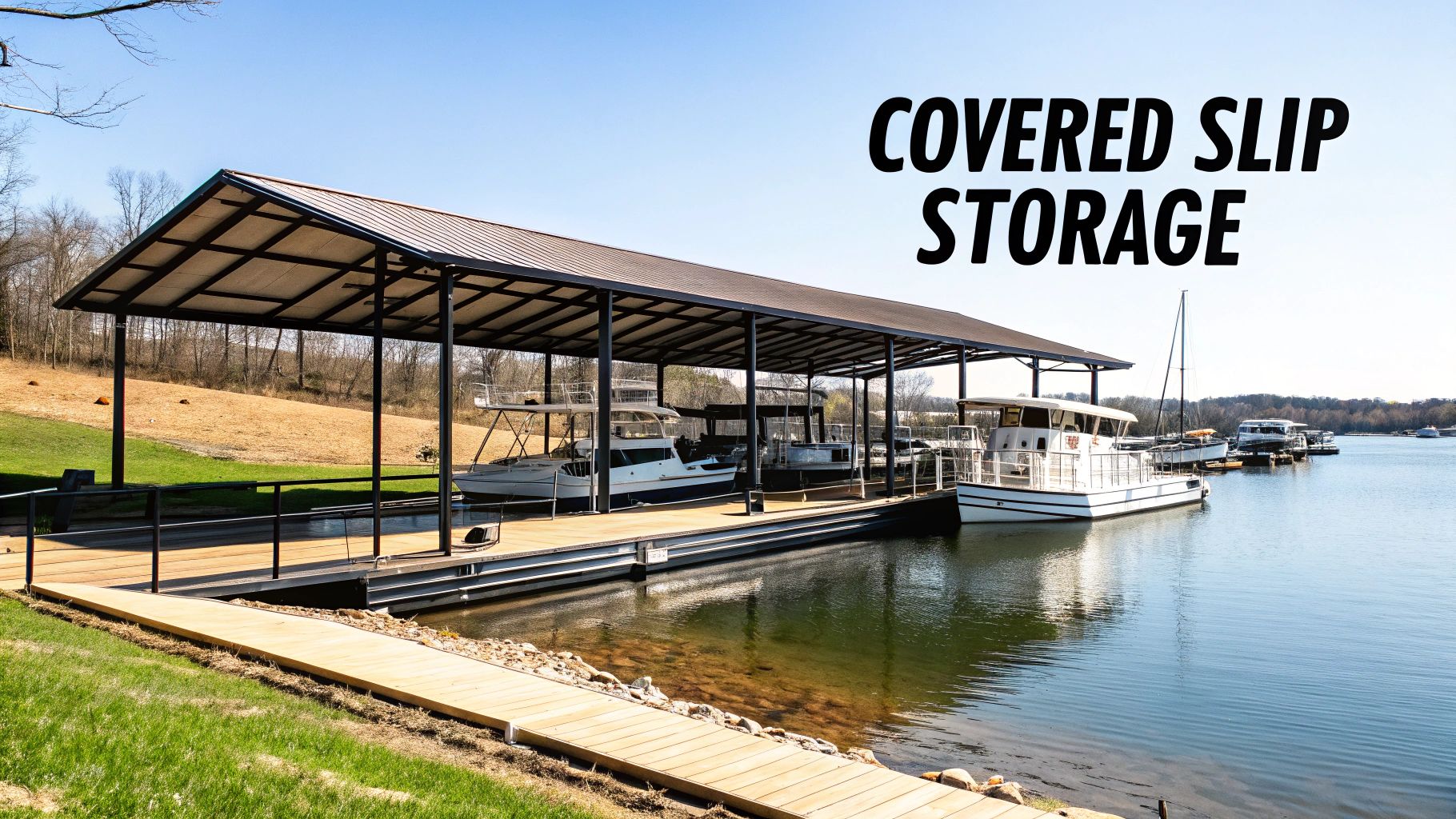
This popular boat storage idea is common in areas with intense sun or frequent rain. Premier marinas like Marina Jack in Sarasota have extensive covered slip options. These slips slow the deterioration of gelcoat, canvas, and upholstery.
Key Insight: Covered slips provide the "best of both worlds." They combine the grab-and-go convenience of a wet slip with crucial overhead protection.
Why Choose Covered Slip Storage?
The main advantage is the fusion of protection and accessibility. Your boat is guarded from the most damaging effects of sun and rain. At the same time, your vessel is always in the water, ready to go.
This option is perfect for boat owners who use their vessels frequently. The roof structure not only protects the boat but can also make boarding more comfortable. It’s a practical solution for maintaining your boat’s condition.
Practical Tips for Using Covered Slips
To get the most value from this popular boat storage idea, keep these points in mind:
- Verify Vertical Clearance: Measure your boat’s total height from the waterline. Ensure it fits safely under the roof.
- Reserve Well in Advance: Covered slips are in high demand and limited supply. It is wise to book months ahead of the season.
- Check Insurance Implications: Some insurance providers offer discounts for boats kept in covered slips. Ask your agent if you qualify.
- Consider Slip Orientation: If possible, choose a slip that offers the best protection from prevailing winds and afternoon sun.
Boat Storage Solutions Comparison
| Storage Type | Implementation Complexity 🔄 | Resource Requirements ⚡ | Expected Outcomes 📊 | Ideal Use Cases 💡 | Key Advantages ⭐ |
|---|---|---|---|---|---|
| Dry Stack Marina Storage | Medium to High (automated racks, forklifts) | High (climate control, security, specialized equipment) | High protection; weather & UV damage reduced; secure | Medium-sized boats (up to 35 ft); year-round storage | Weather protection; reduced hull fouling; no tidal restrictions |
| Boat Lift Systems | High (mechanical, electrical installation) | High (lift systems, hydraulic/pneumatic parts, maintenance) | Hull protection; immediate water access; less maintenance | Private docks; storm-prone areas; frequent boat use | Eliminates marine growth; storm protection; instant access |
| Trailer Storage Solutions | Low (simple storage but requires trailer upkeep) | Low (storage space, covers, security devices) | Cost-effective; high mobility; easy maintenance | Small to large boats stored offsite; flexible launching | Most affordable; maximum mobility; no size limits |
| Indoor Warehouse Storage | Medium (building access, climate control) | Medium to High (warehouse space, temp control, security) | Full weather/UV protection; secure; easy maintenance | High-value boats; long-term storage; harsh climates | Complete element protection; secure; professional management |
| Mooring Systems | Medium (anchor installation, regulatory permits) | Low to Medium (anchors, chains, buoys, ongoing inspection) | Low-cost water access; natural wave action; constant access | Various boat sizes; natural harbors; budget-conscious | Lower cost than slips; unlimited access; less crowded |
| Floating Dock Storage | Medium (modular setup, anchoring complexity) | Medium (floats, decking, utilities, anchoring) | Flexible water-level access; tide adjustment; relocatable | Variable water depths; seasonal use; smaller marinas | Adapts to tide; customizable; lower cost than fixed docks |
| Covered Slip Storage | Medium (roof installation, marina integration) | Medium to High (roofing, utilities, marina services) | Weather protection with immediate water access | High-value boats; year-round boaters; UV-sensitive gear | Combines wet storage convenience with weather protection |
Choosing the Right Harbor for Your Vessel
Selecting the ideal storage for your boat is a significant decision. This choice influences your vessel's longevity, your financial outlay, and your time on the water. We have explored a diverse range of boat storage ideas in this guide.
The key takeaway is that there is no single "best" option. Your decision hinges on your boat’s size, local climate, budget, and how often you plan to set sail. Each method offers a unique blend of security, accessibility, and cost.
Synthesizing Your Options for Optimal Protection
Let's distill the core concepts to help guide your final decision:
- For Maximum Security & Weather Protection: Indoor warehouse and dry stack systems offer unparalleled defense. These are premium choices for safeguarding a significant investment.
- For Unbeatable Convenience: A boat lift at a private dock provides instant water access. A well-maintained trailer in your driveway also keeps your vessel ready for trips.
- For Cost-Effective & Flexible Solutions: Trailer storage at home is often the most budget-friendly path. Mooring systems can also be an economical choice.
Your Actionable Next Steps
Mastering these boat storage ideas is about long-term asset protection. Your boat is a source of freedom, adventure, and memories. The right storage ensures it remains in peak condition.
Before you commit, take these final steps:
- Assess Your Boating Habits: Be realistic about how often you use your boat.
- Inspect Potential Facilities: Visit any marina, warehouse, or dry stack you are considering. Scrutinize their security and cleanliness.
- Calculate the Total Cost: Factor in all expenses, including fees, insurance, and transportation.
Ultimately, the best boat storage ideas empower you with peace of mind. A well-stored boat is a well-loved boat, ensuring countless seasons of enjoyment.
Ready to dive deeper into boat ownership? The journey doesn't end with storage. For more expert guides and tips, explore the resources at Boating Articles. Visit Boating Articles to continue learning and become a more confident boater today.


